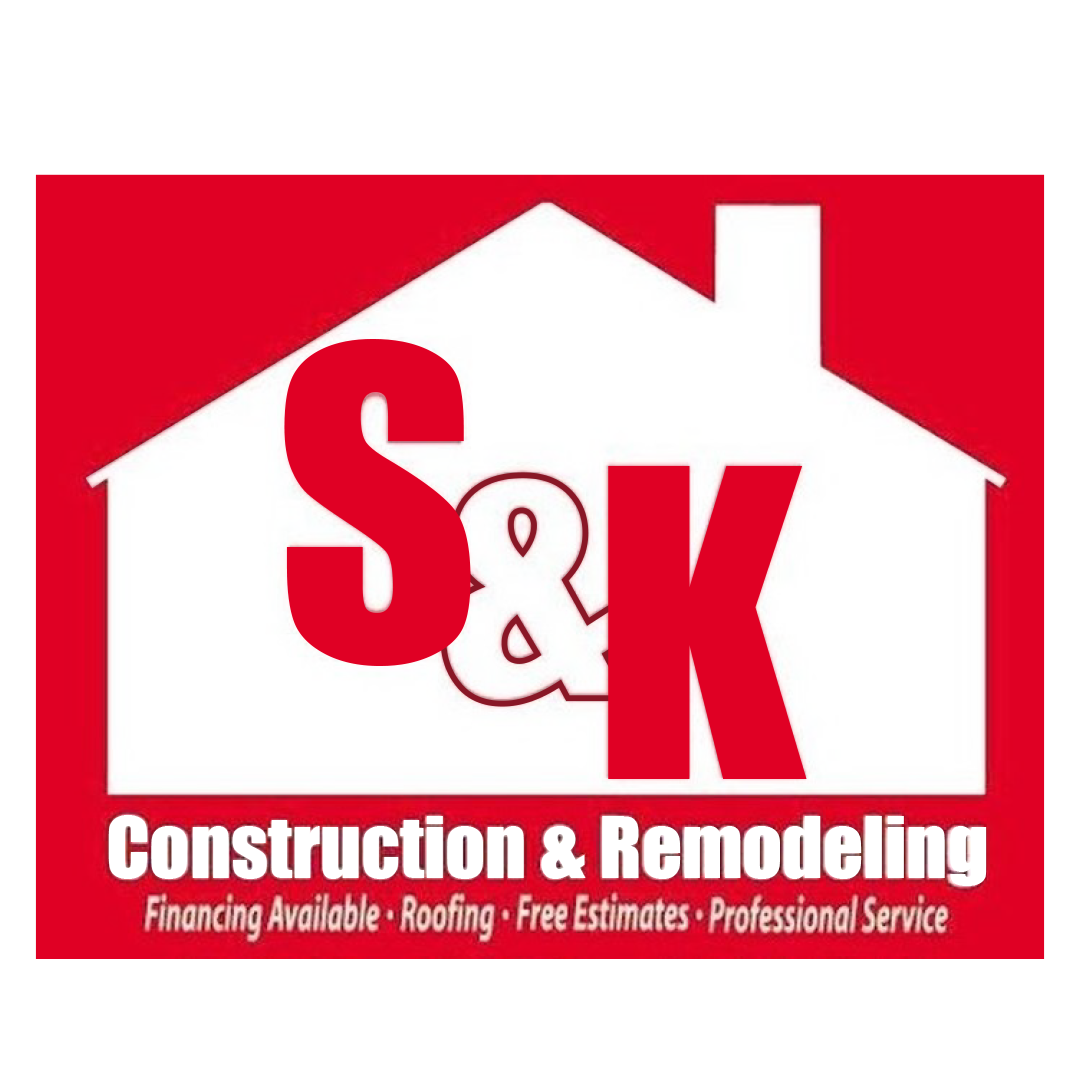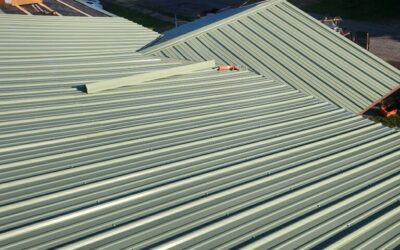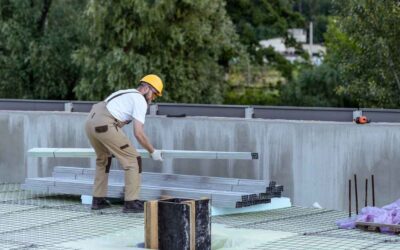Table of Contents
- Introduction: The Urgency of a Leaking Roof
- Immediate Actions to Take When You Discover a Leak
- 2.1. Contain the Water
- 2.2. Protect Your Belongings
- 2.3. Locate the General Leak Area
- Temporary Fixes You Can Do Yourself
- 3.1. Tarping Your Roof
- 3.2. Buckets, Towels, and Caulk
- 3.3. Sealing Exposed Flashing
- When to Call a Professional Roofing Company
- 4.1. Beyond the DIY Scope
- 4.2. Safety Considerations
- 4.3. Preventing Further Damage
- How S&K Construction and Remodeling LLC Handles Leaks
- 5.1. Free Leak Inspection & Assessment
- 5.2. Comprehensive Diagnostic Tools
- 5.3. Transparent Repair Plans
- Common Causes of Roof Leaks in Northeast Ohio
- 6.1. Damaged Shingles & Missing Granules
- 6.2. Faulty Flashing & Roof Penetrations
- 6.3. Clogged Gutters & Ice Dams
- 6.4. Aging Underlayment & Roofing Materials
- Protecting Your Home While Waiting for Repairs
- 7.1. Interior Precautions
- 7.2. Monitoring for Mold & Mildew
- Cost Considerations: Repairs vs. Replacement
- 8.1. Minor Leak Repairs
- 8.2. Full Roof Replacement
- 8.3. Financing Options
- Insurance Claims & Storm Damage
- 9.1. Documenting the Damage
- 9.2. Working with Adjusters
- 9.3. Maximizing Your Payout
- Preventative Maintenance to Avoid Future Leaks
- 10.1. Seasonal Roof Inspections
- 10.2. Attic Ventilation & Insulation
- 10.3. Gutter Cleaning & Trimmed Trees
- Why Early Action Matters
- FAQs: What Can I Do If My Roof Is Leaking?
- Conclusion & Next Steps
1. Introduction: The Urgency of a Leaking Roof
A dripping ceiling stain, a musty attic odor, or a rogue puddle on your living room floor—when your roof starts leaking, it’s more than an inconvenience. In Jefferson, Ashtabula, Youngstown, Cleveland Heights, and surrounding Northeast Ohio communities, hidden water damage can rapidly degrade structure, insulation, and interior finishes. Knowing what you can do if your roof is leaking can save thousands in repair costs and protect your family’s health.
In this guide, S&K Construction and Remodeling LLC will walk you through immediate steps, DIY patches, professional repair triggers, cost considerations, insurance support, and preventive measures—ensuring you’ll know exactly what to do when that first drip appears.
2. Immediate Actions to Take When You Discover a Leak
When you spot water intrusion, time is critical. Follow these steps:
2.1. Contain the Water
- Place buckets or basins under drips to collect water.
- If the leak is moving, set multiple containers.
2.2. Protect Your Belongings
- Move furniture, electronics, and valuables away from the wet zone.
- Cover floors with tarps or towels to prevent staining.
2.3. Locate the General Leak Area
- Look for ceiling bubbles, discoloration, or sagging drywall.
- Note whether the leak worsens during or after storms, or only when you use plumbing fixtures (to rule out interior leaks).
Document each wet spot with photos and timestamps—essential for insurance claims later.
3. Temporary Fixes You Can Do Yourself
While these won’t replace a professional repair, DIY measures can minimize damage until help arrives.
3.1. Tarping Your Roof
- Rent or buy a heavy-duty tarp.
- Securely anchor it over the leak zone with roofing nails or bungee cords—avoid high winds.
- Cover down to the eaves, extending at least 3–4 feet beyond the damaged shingles.
3.2. Buckets, Towels, and Caulk
- Place towels or rags under the drip inside.
- Use plumber’s putty or roofing caulk to seal small gaps around vent pipes or flashing.
- Caulk dries quickly but won’t last through severe weather—treat it as a temporary seal.
3.3. Sealing Exposed Flashing
- Flashing around chimneys, skylights, or dormers often fails first.
- Clean debris, then apply a bead of exterior-grade silicone sealant along seams.
- Inspect nail heads and seal them individually.
These quick fixes can buy you 24–72 hours of protection while you arrange a professional repair.
4. When to Call a Professional Roofing Company
Not all leaks are safe to DIY. Know your limits:
4.1. Beyond the DIY Scope
- Leaks in plumbing-vent boots, chimney flashing, or complex valleys
- Widespread shingle damage across multiple roof planes
- Soft or rotted decking under the shingles
4.2. Safety Considerations
- Slippery surfaces, steep pitches, or structural rot pose fall risks.
- Electric hazards if water is near wiring or light fixtures.
4.3. Preventing Further Damage
- A quick tarp may not protect from wind-driven rain.
- Hidden rot can spread, requiring larger repairs if left unchecked.
For these cases, call S&K Construction and Remodeling LLC—serving Jefferson, Ashtabula County, Youngstown, Medina, Cleveland, and more—for a free roof leak inspection.
5. How S&K Construction and Remodeling LLC Handles Leaks
Here’s our proven process:
5.1. Free Leak Inspection & Assessment
- Visual roof survey from ground and vantage points.
- Attic walk-through to trace water migration.
- Photographic documentation for transparent quotes.
5.2. Comprehensive Diagnostic Tools
- Infrared cameras to reveal trapped moisture.
- Moisture meters to measure saturation depth.
- Garden-hose tests for pinpointing elusive leaks.
5.3. Transparent Repair Plans
- Detailed proposal outlining required materials and labor.
- Owens Corning–backed shingles and underlayment.
- Written warranties on workmanship and product.
We stand behind every repair in Willoughby, Chardon, Concord, Lakewood, Cleveland Heights, and beyond.
6. Common Causes of Roof Leaks in Northeast Ohio
Understanding why roofs fail helps prevent future issues:
6.1. Damaged Shingles & Missing Granules
- Dew, ice, and foot traffic erode shingle granules.
- Exposed fiberglass blisters and cracks allow water entry.
6.2. Faulty Flashing & Roof Penetrations
- Rusted or improperly installed metal flashing around chimneys, vents, and skylights.
- Cracked rubber boots around plumbing vents.
6.3. Clogged Gutters & Ice Dams
- Debris in gutters causes water to pool at the eaves.
- Winter’s freeze–thaw cycles form ice dams that backwater under shingles.
6.4. Aging Underlayment & Roofing Materials
- Underlayment loses adhesion over 15–20 years.
- Saturation and UV damage degrade waterproofing layers.
Regular inspections in Mentor, Madison, Beachwood, Twinsburg, and Wickliffe catch these issues early.
7. Protecting Your Home While Waiting for Repairs
Even a temporary patch can leave moisture behind—take these interior steps:
7.1. Interior Precautions
- Remove wet insulation from the attic to prevent mold.
- Use a dehumidifier in attics or upper floors.
- Keep attic hatch closed and insulated to contain moisture.
7.2. Monitoring for Mold & Mildew
- Inspect ceilings and walls weekly for new stains or odor.
- Clean small mold spots with a bleach solution (1:10 ratio) and allow to dry completely.
Prompt mold cleanup preserves indoor air quality for your family in Cuyahoga County and beyond.
8. Cost Considerations: Repairs vs. Replacement
8.1. Minor Leak Repairs
- Typical cost: $300–$1,200 depending on complexity.
- Includes shingle replacement, flashing repair, and sealant.
8.2. Full Roof Replacement
- Average Northeast Ohio home: $8,000–$15,000 for asphalt shingles.
- Includes tear-off, new underlayment, ventilation upgrades, and warranty.
8.3. Financing Options
- 0% intro APR plans for up to 12 months
- Low-monthly-payment loans up to 60 months
- No-upfront-cost solutions for qualified homeowners
At S&K Construction and Remodeling LLC, we guide you through financing to fit any budget—so you won’t delay essential repairs.
9. Insurance Claims & Storm Damage
If your leak is storm-related, you may recover costs through your homeowners policy:
9.1. Documenting the Damage
- Take clear photos of stains, wet areas, and exterior roof damage.
- Save all receipts for temporary repairs (tarps, sealants).
9.2. Working with Adjusters
- We provide detailed damage reports and moisture readings.
- Our team can meet your adjuster on site to explain findings.
9.3. Maximizing Your Payout
- Differentiating cosmetic vs. functional damage
- Including code-upgrade fees if local ordinances require new underlayment or flashing standards
Let S&K Construction and Remodeling LLC manage the paperwork so you get the coverage you deserve.
10. Preventative Maintenance to Avoid Future Leaks
A little care goes a long way:
10.1. Seasonal Roof Inspections
- Spring: Check for winter-storm damage and clear debris.
- Summer: Inspect for blistering from excessive heat.
- Fall: Clean gutters, trim overhanging branches.
- Winter: Monitor ice-dam formation, ensure insulation and vents are clear.
10.2. Attic Ventilation & Insulation
- Proper soffit and ridge vents prevent condensation.
- Upgrading to blown-in insulation reduces attic temperature differentials.
10.3. Gutter Cleaning & Trimmed Trees
- Clear leaves and twigs at least twice per year.
- Trim back branches 6–8 feet from the roof to minimize wear.
Ask about our annual maintenance plan—we’ll handle all seasonal checks for your home in Ashtabula, Lakewood, or Concord.
11. Why Early Action Matters
Delaying roof leak repairs leads to:
- Structural rot: Framing, sheathing, and decking damage
- Electrical hazards: Water intrusion near wiring and fixtures
- Health risks: Mold growth triggers allergies and respiratory issues
- Higher costs: What starts as a $500 repair can balloon into thousands
In Northeast Ohio’s freeze–thaw climate, every season compounds damage—so act fast at the first sign of trouble.
12. FAQs: What Can I Do If My Roof Is Leaking?
Q1: How long can I wait to repair a small leak?
A: No more than a few days—moisture spreads quickly and breeding grounds for mold multiply in 24–48 hours.
Q2: Can I walk on my roof to inspect a leak?
A: Only if you have safe ladder access, non-slip footwear, and the roof pitch is moderate. Otherwise, call professionals.
Q3: Will my homeowners insurance cover a leaking roof?
A: Coverage depends on cause. Storm or hail damage usually qualifies; wear & tear or lack of maintenance often does not.
Q4: What materials do you use for leak repairs?
A: We use Owens Corning Duration® shingles, ice & water shield underlayment, 24-gauge step flashing, and high-grade sealants.
Q5: How do I know if I need a full replacement?
A: If more than 30% of shingles are damaged, underlayment is deteriorated, or decking is rotted, replacement is more cost-effective.
13. Conclusion & Next Steps
A leaking roof is never just “a little drip.” It’s a ticking time bomb that threatens your home’s structure, your family’s health, and your budget. But now you know exactly what you can do if your roof is leaking:
- Contain and document the leak immediately.
- Apply temporary fixes—tarps, buckets, caulk—only as a stopgap.
- Call S&K Construction and Remodeling LLC for a free, professional leak inspection across Jefferson, Youngstown, Cleveland, and all of Northeast Ohio.
- Review transparent repair or replacement options, complete with financing and insurance support.
- Enroll in our preventative maintenance program to avoid future crises.
Don’t let a small leak become a major emergency. Contact S&K Construction and Remodeling LLC today at (440) 384-3251 or visit www.skconstructionremodeling.com to schedule your free roof leak inspection. Our Owens Corning–certified team is standing by to secure your roof and your peace of mind.
S&K Construction and Remodeling LLC – Protecting homes, families, and investments throughout Northeast Ohio.
 (440) 307-2060
(440) 307-2060


